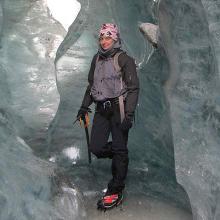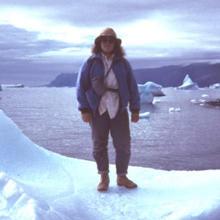
Dr. Jill Mikucki is a polar microbial ecologist who studies ice-covered Antarctic ecosystems. She is an Associate Professor of Microbiology at the University of Tennessee, Knoxville and her research interests include extremophiles and astrobiology. Mikucki has served as a member of the NSF Science Advisory Board to the US Ice Drilling Program Office and chair of its Subglacial Access Working Group. She received her PhD in Antarctic Microbial Ecology from Montana State University and has remained interested in the structure and function of microbial ecosystems below ice ever since. Jill has participated in numerous Antarctic field projects, including investigations of Blood Falls, the first sampling of an Antarctic subglacial lake, Subglacial Lake Whillans. She is particularly motivated by multidisciplinary collaborations for the clean access exploration of subglacial environments.

Dr. Cynthia Phillips is a planetary geologist at the NASA Jet Propulsion Laboratory, California Institute of Technology, in Pasadena, CA. She is a project staff scientist and science communications lead for the upcoming Europa Clipper mission, and also works on a variety of future mission concepts to land on the surface and explore the subsurface of Europa and other ocean worlds. Her scientific research involves small-scale surface processes and surface/subsurface exchange on icy surfaces, as well as interests in scientific image processing, remote sensing, impact craters, and surface geology and geophysics. Dr. Phillips received an AB in Astronomy and Astrophysics, and Physics, from Harvard University, and a PhD in Planetary Science, with a minor in Geoscience, from the University of Arizona. She spent 15 years working as a research scientist at the SETI Institute before joining JPL.
